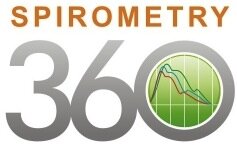Spirometry Learning Labs
We know that your time is valuable and attending a series of live courses can be tough on your schedule. We developed a solution that we think will help—the Spirometry 360 Self-Paced Learning Labs. All of the content is self-paced and available 24/7, offering you flexibility to view the material at your convenience.
The Spirometry Learning Labs are a series of case-based and interactive modules focusing on performing a quality test, correctly interpreting it for clinical utility, and integrating spirometry into your daily practice. Included in the material are sessions for coaches (those who administer the test) and providers (those who interpret the results). The Learning Labs are offered in both Pediatric and Family Practice tracks.
Learn from clinical experts how to overcome common obstacles to correct spirometry coaching and interpretation. Our faculty of adult and pediatric pulmonologists and primary care providers (MDs) and respiratory therapists (RTs) guide clinical interpreters and test administrators through case-based examples.
Here are just a few of the features:
Learn material from our expert faculty with engaging video-based modules and quizzes to confirm your knowledge
Start and stop at your convenience with simple content organization
All material available anytime from your PC or Mac (internet connection required)
* Spirometry Fundamentals is included with the Self-Paced Learning Labs
Learning Lab Courses
Coach 1: Performing a Good Maneuver
Learn how to perform a good maneuver. Learning objectives are based on the American Thoracic Society guidelines for performing good quality spirometry.
Coach 2: Fixing Common Errors
Learn how to recognize common errors and how to correct them, using simple and patient-centric approaches.
Provider: Interpreting Spirometry Results
Learn how to evaluate normal and abnormal spirometry for providers who will be interpreting the test and making clinical decisions. The learning objectives include how to recognize a good quality test, how to distinguish normal lung function from obstruction, how to recognize reversible obstruction, and when referral for further evaluation is appropriate.
Provider/Coach Combined: Putting Spirometry into Practice
Learn how to incorporate spirometry into a primary care-based planned visit model. Using proven strategies for quality improvement and system change, participants are given a variety of Guidelines-based resources to accomplish this aim. Clinical guidelines for asthma and COPD are also reviewed.


